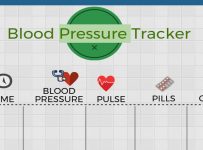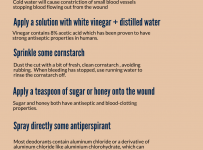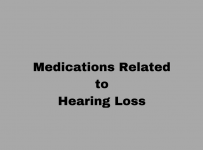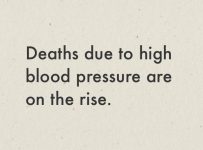There is no contraindication to exercise knowing you have high blood pressure. Actually you are allowed any kind of exercise as long as you do not overdo it. Ideally, moderate training on a daily basis is enough to strengthen your heart and relax your blood vessels preventing blood pressure spikes. You don’t need a gym subscription in order to begin with short and simple sets of exercises that are easy to perform everywhere. Check with your doctor first to be sure that you are ready to engage in a more active lifestyle.
7 Workout Tips for People with High Blood Pressure or Heart Disease
- If you haven’t been very active until today, start working out gradually for 3-4 weeks to reach the proper amount of exercise.
- Always begin your workouts with a 5 minute warming up.
- You must not become exhausted and you should be able to talk when exercising.
- Try not to stop suddenly.
- Do not exercise outdoors if too hot, too cold or too humid.
- Drink enough plain water.
- Consult your doctor about whether a stress test is necessary before engaging to any form of regular exercise.
Types of Exercise
- Cardiovascular Exercise
Choose at least one from these activities:
- Swimming: It is of much benefit for the cardiovascular system, strengthens muscles without stressing the joints. It is advisable to train 3 times a week for 30 minutes.
- Jogging: 20 minutes, 3-4 times per week.
- Bicycling stationary or outdoor. Bike for 30 minutes, 3 times per week.
- Walking: moderate walking at least 30 minutes per day at least 5 days per week.
- Stretching: Stretching and flexibility exercises are a good way to preserve your muscle tone especially if you are not capable for vigorous activity.
- Strength training: This type of exercise causes muscular contraction through resistance (i.e weight lifting), in order to progressively increase the strength, endurance and size of skeletal muscles. When properly performed, strength training could increase metabolism rate and bone density and improve in the long term, heart function and blood pressure.
What is HIIT ?
Probably you’ve got a busy schedule that barely allows you to accomodate some time of organized exercise. The good news is that is not obligatory to spend hours in the gym in order to acquire the benefits of training. Research evidence suggests that HITT (=High-Intensity Interval Training) is a mode of exercise that provides the same benefits as a 45-minute workout, in as little as 10 minutes. A recent study, compared people who were exercising 3 times weekly at a moderate pace for 45 minutes with people that performed three all-out cycling exercise intervals of 20 seconds each with a 2-minute pause in between. In this study the interval group, showed the same results in muscle metabolism, fat burning and insulin resistance.
- Weight training alone can decrease blood pressure in middle aged men with high blood pressure, decreasing subsequently the risk of heart disease and stroke by half.
- Weightlifting can cause temporary blood pressure spikes. However the long-term benefits outweigh this risk.
- Lift lighter weights but repeat many times. Muscle growth is achieved by effort not load.
- Don’t hold your breath. This can decrease your heart rate (even causing an arrhythmia) and increase your blood pressure.
- Lighter weights allow greater motion range.
- Effort, not load increases muscle growth.
- Target muscles are better trained, because they are capable of managing a light load by themselves. Too heavy weights engage bigger muscles (shoulder muscles) that will overpower the smaller ones, as for instance the triceps muscle.
- Lighter weights will let your muscles to do the work, instead of your entire musculosceletal system.
- During running and other aerobic exercises, blood pressure normally rises to meet the increased needs of the body in oxygen.
- People that do not routinely exercise are more likely to experience increases in their blood pressure and heart rate.
- Mild blood pressure rising is not a concern for most people.
- Extreme elevations could be a red flag for future hypertension.
Exercise and Heart Failure
The ability to perform aerobic exercise depends on the capacity of the heart to increase the quantity of blood that sends to the muscles and the ability of the muscles to take out the oxygen molecules from the blood. Large skeletal muscles have increased oxygen demands because they are involved to more strenuous tasks like walking, maintaining posture of your body or weightlifting.
Age, gender and physical status can modify the response to exercise.
Cardiac Output
The total quantity of blood that passes through the heart every minute is called cardiac output and is measured in litres per minute. Cardiac output must be maintained between 4-8 liters per minute and it normally increases during maximal exercise by 4 to 6 times in healthy people. It increases either by increasing the number of heartbeats or the amount of blood in every heartbeat. To achieve a normal response, the heart must be able to contract.
Heart Failure
Heart failure happens when heart muscle becomes weakened and thus unable to contract in order to pump sufficient amount of blood to the body. The ability for aerobic exercise is limited because muscles are unable to work efficiently, due to the so called exercise intolerance.
High blood pressure can lead to heart failure because it increases workload to the heart which in turn makes the heart become enlarged and unable to work normally.
The Agency for Health Care Policy and Research Guidelines on Cardiac Rehabilitation recommends that exercise should be individualized in case of chronic stable heart failure.
You can exercise in two ways: interval training and isolated muscle workouts.
- Interval training means performing a series of low-to-high-intensity workouts combined with rest periods. Various intensities (50%, 70%, and 80% of maximal capacity) can be used. Example: Running or walking with pauses or slowdowns and progressive speed ups.
- Isolated muscle training includes exercises in which only one major muscle group is trained. Examples: Stretching, yoga and light weigh lifting
- Stretching: This kind of exercise involves stretching or flexing of a specific muscle or muscle group. It improves muscle tone and strength and does not require much effort.
- Tai Chi : Research evidence suggests that tai chi may be helpful for high blood pressure and heart failure. It is different from conventional exercise because it includes meditative elements, in addition to non-strenuous, low-impact physical workouts.
- Cardiac Yoga: Yoga is a mind-body activity that involves relaxing in different postures while focusing on breathing. It improves body balance, strength and flexibility. There are many studies that confirm the benefits of yoga on heart function.
- Walking: Is one of the most important types of exercise when you have heart failure. It improves muscle tone and preserves muscle strength preventing muscle deconditioning.
Heart Transplantation and Exercise
According to the Agency for Health Care Policy and Research Guidelines on Cardiac Rehabilitation, exercise training is recommended both before and after transplantation.
Candidates for heart transplantation are usually suffer from severe heart failure, which gets worse during waiting time along with the general status of the patient. To prevent deterioration, transplantation candidates should become enrolled in an exercise program, soon after listing. Aerobic training, resistive exercise and inspiratory muscle training, should become included in the program.
Patients with heart assist devices, should start walking at 7-10 after placement of the device and begin to exercise on treadmill on day 21.
Resource: http://circ.ahajournals.org/content/107/8/1210
*Exercise training guidelines for patients with cardiovascular disease should be followed as provided in the AHA Standards.
















